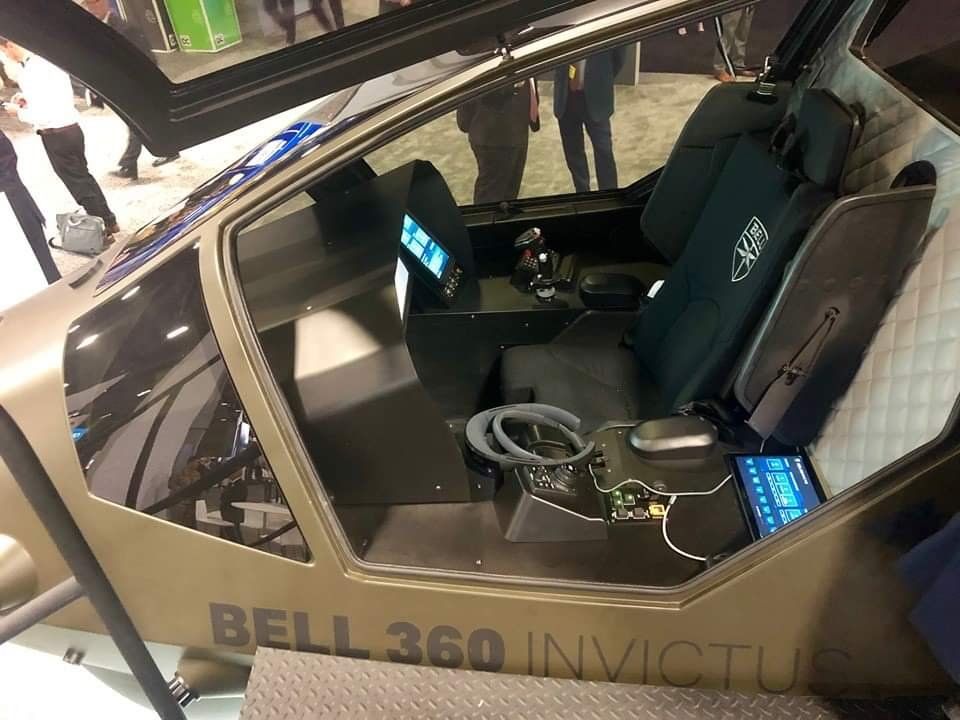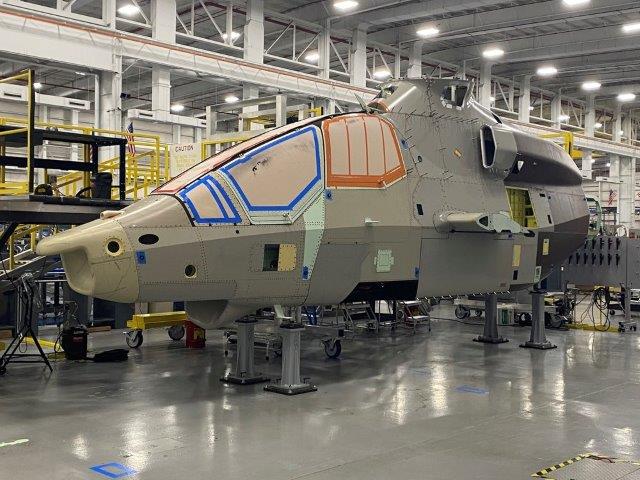The Bell Textron 360 Invictus will be ready in 2022
Bell Textron has announced that it has completed construction of about 50% of the first example of the 360 Invictus reconnaissance and attack helicopter, proposed by the Texas-based company in the US Army’s Future Attack Recon Aircraft (FARA) race.
Despite a complete redesign of the tail rotor, the helicopter is expected to be ready within a year: most of the fuselage and external panels have been assembled at Bell’s manufacturing facility in Amarillo, Texas, and final installation of a bulkhead to attach the tail boom and rotor system elements is now underway. “This team is achieving great results by meeting requirements, reducing programmatic risk and delivering state-of-the-art capabilities for the military,” said Chris Gehler, vice president and program director for Bell 360 Invictus. “We are combining Bell’s unique knowledge of reconnaissance and combat helicopter development requirements with engineering and technical expertise to give the U.S. Army a weapon system to dominate reconnaissance and attack missions for decades to come.” Off-ship construction of several components, such as the main rotor system and blades, is progressing, while hydraulic lines and electronics should be installed soon.

In parallel with the construction of the aircraft, Bell’s Drive Systems Test Lab (DSTL) is continuing testing of the mechanical components deemed to be of high value, the main rotor, supplementary power unit, drive shafts and couplings, mechanical parts that are being subjected to a series of stress use models until 100% of the required airworthiness requirements are achieved. “The Bell 360 Invictus is an exciting aircraft that brings together sophisticated digital systems into a high-speed, reliable and maintainable helicopter even in austere environments around the world,” – said Jayme Gonzalez, program manager, Bell 360 Invictus – it offers the US Army the opportunity to modernise using a simplified and inherently reliable design to reduce costs and deliver greater effectiveness and combat capability.”
Manufacturer Bell Helicopters has produced a mock-up presented during the AUSA – Association of the United States Army 2019 conference. Currently in this design phase, Bell’s helicopter is expected to go airborne for the first time in 2022. Bell has decades of experience in providing attack and reconnaissance aircraft to the Pentagon, such as the Kiowa Warrior, which has provided high reliability and availability for over 850,000 flight hours. The 360 Invictus design builds on this legacy, the technological innovations Bell has fielded over the years and the successful development and production capabilities required as part of the Joint Multi-Role Technology Demonstration (JMR TD) over the past six years.

The Future Attack Recon Aircraft (FARA) is part of the broader Future Vertical Lift programme. Its goal is to design and build light reconnaissance and attack helicopters that will fill the void left by the OH-58D Kiowa Warrior helicopters retired in 2017. FARA may also take over some of the tasks of the AH-64E (which, in turn, has been stripped of some of the tasks of the OH-58D). Two years ago, the then Chief of Army Staff, General Mark Milley, announced (and surprised many observers) that the new helicopters would replace about half of the Apache fleet.
The requirements are that the helicopter must reach a speed of at least 180 knots (333 kilometres per hour) and have an unladen mass of no more than 6,350 kilograms. Since the US Army expects future conflicts to be largely urbanised, the new helicopter must have a rotor no larger than 12.2 metres in diameter to manoeuvre between buildings. The Bell 360 Invictus is a two-seat tandem attack and reconnaissance helicopter built in a classic configuration, namely a single-rotor with a steerable propeller, commonly known as the Sikorski system.
Some technical solutions, including the main rotor system and fly-by-wire control system, were taken from the Bell 525 Relentless helicopter, which successfully achieved a speed of 200 knots in test flights. However, while the Relentless has a five-blade rotor, the Invictus opted for a four-blade one. When Bell published the first pictures of the Invictus, comparisons with the Boeing/Sikorsky RAH-66 Comanche prototype helicopter immediately followed. However, the shape of the Invictus, although externally similar, was not dictated by low detection requirements, but by aerodynamic and fire resistance considerations.

However, the effect of the reduced effective reflecting surface of radar emissions can be achieved to a certain extent, e.g. by using special coatings that are more advanced than at the time of Comanche. It also does not rule out the use of solutions that reduce detectability in the acoustic and infrared bands. One of the main common features between Comanche and Invictus is the type of propeller. Initially, the Bell 360 was to be equipped – just like the RAH-66 – with a tail rotor built on an inclined plane. In the end, however, it was decided to use a classic steerable propeller. Here, the search for simplicity, the lowest possible weight and the reliability of the structure prevailed. Thanks to this decision, the propeller can be borrowed, along with the rest of the system, directly from the Bell 525. Fabio Gigante for Aeromorning










Be the first to comment on "Bell Textron 360 Invictus will be ready"